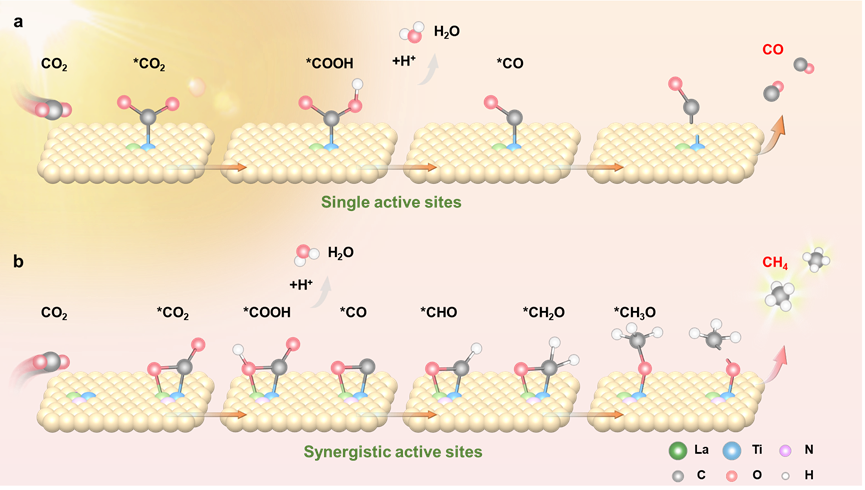《Nano Lett.》: Nitrogen Doping-Roused Synergistic Active Sites in Perovskite Enabling Highly Selective CO2 Photoreduction into CH4
Qinyuan Hu,+ Mengqian Li,+ Juncheng Zhu,+ Zhixing Zhang, Dongpo He, Kai Zheng, Yang Wu, Minghui Fan, Shan Zhu, Wensheng Yan, Jun Hu, Junfa Zhu, Qingxia Chen,* Xingchen Jiao,* and Yi Xie*
The intricate protonation process in carbon dioxide reduction usually makes the product unpredictable. Thus, it is significant to control the reactive intermediates to manipulate the reaction steps. Here, we propose that the synergistic La–Ti active sites in the N-La2Ti2O7 nanosheets enable the highly selective carbon dioxide photoreduction into methane. In CO2 photoreduction over N-La2Ti2O7 nanosheets, in situ Fourier transform infrared spectra are utilized to monitor the *CH3O intermediate, pivotal for methane production, whereas such monitoring is not conducted for La2Ti2O7 nanosheets. Also, theoretical calculations testify the increased charge densities on the Ti and La atoms and the regulated formation energy barrier of *CO and *CH3O intermediates by the constructed synergistic active sites. Accordingly, the methane formation rate of 7.97 μL h−1 exhibited by the N-La2Ti2O7 nanosheets, along with an electron selectivity of 96.6%, exceeds that of most previously reported catalysts under similar conditions.

Figure 1. Regulating the reaction step in CO2 reduction pathways. (a) the single active-site catalyst and (b) the synergistic active-site catalyst.
